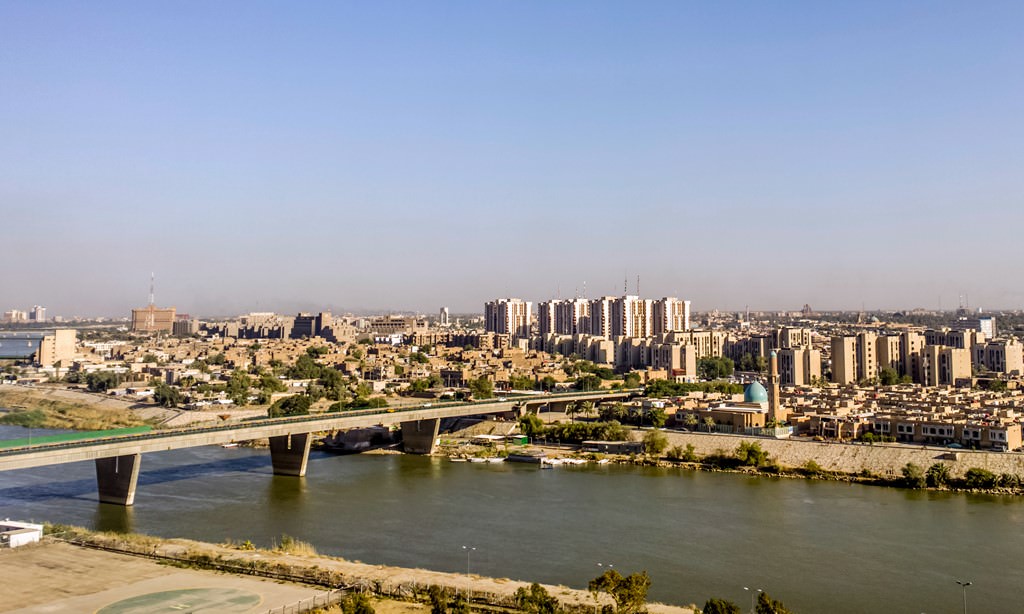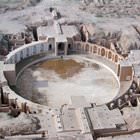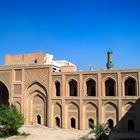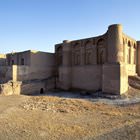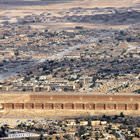Travel ideas for Iraq - unique sights, worth Guinness records
Hanging Gardens of Amitis
From the series “Seven Wonders of the World” The Hanging Gardens of Babylon, also known as the Hanging Gardens of Amytis, is an amazing architectural structure of the ancient world, which couldn't survive to the present day. According to legend, the luxurious architectural complex was built by order of King Nebuchadnezzar II, who gave to the installation the name of his wife. According to legend, the hanging gardens were located in Babylon. Today, their location coincides with the center of the Iraqi city of Hilla.
The Hanging Gardens of Babylon, also known as the Hanging Gardens of Amytis, is an amazing architectural structure of the ancient world, which couldn't survive to the present day. According to legend, the luxurious architectural complex was built by order of King Nebuchadnezzar II, who gave to the installation the name of his wife. According to legend, the hanging gardens were located in Babylon. Today, their location coincides with the center of the Iraqi city of Hilla. The legend associated with the construction of a fabulously charming palace with a garden is very amazing. In the 7th century BC, Babylonian King Nebuchadnezzar II concluded a military alliance with the king of the Medes and confirmed his marriage to the daughter of the Median king. Queen Amytis wasn't pleased by the noisy and dusty Babylon featuring extremely depressing desert landscapes. To comfort his wife, the king commanded to construct the hanging gardens for her. It was the incredibly beautiful palace with spacious terraces, which were literally drowning in various flowering plants.
Archaeologists and historians discovered that the most magnificent building in Babylon was the four-story pyramid-shaped palace. The facade has been almost completely hidden by the dense greenery. Waterfalls have fallen down from palace walls forming a huge pond. The main perplexity associated with the second wonder of the world, is the fact that the grand building is not mentioned in a number of important and detailed chronicles. Herodotus never told about the Hanging Gardens in his writings. The only documentary evidence of their existence is the chronicle of the Chaldean priest Berosus. However, modern scientists see no doubt in this spectacular palace. ... Complete sights collection
Babylon Ruins
From the series “The Surviving Artifacts of Jewish Civilization” People who practice Judaism and show interest in the culture of the ancient world, will like to visit the ruins of the ancient city of Babylon. This city was founded more than 5 000 years ago. It was one of the largest cities in ancient Mesopotamia. For hundreds of years, Babylon remained the most important political, economic, and cultural center. Today, you can see the ruins of one of the oldest cities in the world near Al Hillah. Babylon was destroyed as early as the 1000 BC. However, the ruins of this ancient city do not cease to amaze with their greatness.
People who practice Judaism and show interest in the culture of the ancient world, will like to visit the ruins of the ancient city of Babylon. This city was founded more than 5 000 years ago. It was one of the largest cities in ancient Mesopotamia. For hundreds of years, Babylon remained the most important political, economic, and cultural center. Today, you can see the ruins of one of the oldest cities in the world near Al Hillah. Babylon was destroyed as early as the 1000 BC. However, the ruins of this ancient city do not cease to amaze with their greatness. An area of the ancient city was about 4 square km. There were many fortifications, majestic palaces, and religious monuments. Today, their ruins attract to these places many people practicing Judaism. Since the beginning of archaeological research in the ancient Babylon, many objects were restored. Travelers have an opportunity to admire the great fortification wall that has surrounded the city thousands of years ago. Tourists can see recreated ancient towers and fortresses.
In addition to the ruins of ancient buildings, researchers also found numerous clay tablets with the cuneiform writing. Decoding them will shed light on many important historical events and Jewish traditions. For many years, Babylon remained synonymous with any large and immoral city. For the first time, the death of Babylon was foretold by the prophet Isaiah. For several thousand years, the magnificent ancient city and its tragic history have been an integral part of Jewish culture. Absolutely anyone can stroll through its artistically restored streets today. ... Complete sights collection
Jarmo
From the series “Remains of the First Ancient Cities” The city of Jarmo is a unique settlement from the early Neolithic period. It was founded in the 7th Millennium BC. The archaeological district is located in the scenic foothill areas. Oak and pistachio forests cover a significant part of its territory today. According to rough estimates, the area of the ancient city was more than 12,000 square meters. The city existed until the beginning of the 5th Millennium BC. Adobe structures, as well as stone tools, were discovered during research.
The city of Jarmo is a unique settlement from the early Neolithic period. It was founded in the 7th Millennium BC. The archaeological district is located in the scenic foothill areas. Oak and pistachio forests cover a significant part of its territory today. According to rough estimates, the area of the ancient city was more than 12,000 square meters. The city existed until the beginning of the 5th Millennium BC. Adobe structures, as well as stone tools, were discovered during research. Shell jewelry discovered during the excavations has become an important find for archaeologists. They indicate that the inhabitants of Jarmo maintained trade relations with neighboring tribes. Numerous products and tools made of bone also indicate a high level of development of the city's residents. They include buttons, spoons, and even needles. Fragments of pottery were found on the territory of the ancient city. They are considered the earliest in the Middle East.
Farming and ranching were the main occupations of the city's residents. Places, where barley, legumes, and wheat were cultivated for many years, were discovered on the territory of the city. Grazing was also carried out in these places. The ruins of square mud houses are considered the main attractions of the archaeological area today. Even the hearth survived in some of them. Recent radiocarbon dating suggests that some dwellings were founded in these areas more than 11.5 thousand years ago. Surprisingly, the city's population was relatively small at such an impressive scale. About 150 people lived there permanently. ... Complete sights collection
Abu Ghraib Prison
From the series “Famous prisons of the world”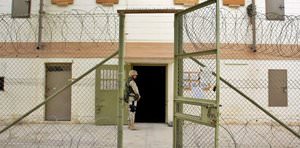 Abu Ghraib prison is located in the city of the same name in Iraq. It is located in the vicinity of Baghdad. The opening of this prison took place relatively recently, in 1960. It was built specifically for the detention of political criminals. Abu Ghraib prison has become known all over the world because some of the world's largest mass executions and tortures were committed in it. One of the most brutal periods of incarceration began in 2003. United States troops invaded Iraq at this time.
Abu Ghraib prison is located in the city of the same name in Iraq. It is located in the vicinity of Baghdad. The opening of this prison took place relatively recently, in 1960. It was built specifically for the detention of political criminals. Abu Ghraib prison has become known all over the world because some of the world's largest mass executions and tortures were committed in it. One of the most brutal periods of incarceration began in 2003. United States troops invaded Iraq at this time. Evidence of mass torture was made public a year later. The US military used them against prisoners. The prison came under the control of the Iraqi government in 2006. All prisoners were transferred from Abu Ghraib to other prisons in the country as soon as possible. The Iraqi government decided to close the prison in 2014. Numerous rebel attacks have contributed to this in many ways. They have repeatedly managed to release several hundred prisoners.
Criminal proceedings were initiated against the US military in 2006. Judge Alvin Hellerstein did it. It was he who ordered the United States government to release the photos taken by the American invaders in prison. 12 American servicemen were found guilty. They were sentenced to various prison terms. Abu Ghraib is no longer used for its intended purpose. But the territory of the former prison is strictly guarded. Outsiders are not allowed to enter it. ... Complete sights collection
This article about unique points of interest in Iraq is protected by the copyright law. You can re-use the content, but only under the condition of placement of an active link to www.orangesmile.com.


 English
English Russian
Russian Nederlands
Nederlands Deutsch
Deutsch Español
Español Français
Français Türkçe
Türkçe


